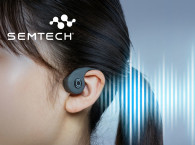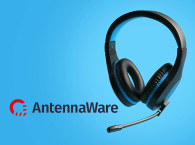
Near Field Communication (NFC) is a contactless communication technology operating over a radio using a base frequency of 13.56 MHz with a typical range of 2cm and a data rate of 424 Kbit/s, and can also transmit power over the connection allowing for battery-less operating modes. The NFC Forum defines a superset of Specifications that enable NFC connections for a variety of products including mobiles, tablets, wearables, automobiles, door locks, along with battery-less use case like tags in apparel, packaging, and other consumer products.
Launched as a non-profit industry association in 2004 by leading mobile communications, semiconductor, and consumer electronics companies, the NFC Forum develops these specifications to ensure interoperability among devices and services. The new Card Emulation mode describes a device that operates like a contactless card that is able to communicate with a contactless reader device. Typical use cases are the emulation of contactless banking cards for payment or to emulate contactless tickets for public transport. Wearables are electronic devices that are physically worn by individuals or embedded into clothing and can provide a variety of services such as health monitoring and payment.
Apple, which is a sponsor member of the NFC Forum and seats on its board, was the first technology company to make available such solutions at a global scale. Yet, Apple implements NFC-based systems that are often combined with Bluetooth and Ultra-Wideband (UWB) technologies to extend usability. Apple can do that because it controls all hardware and software elements of their products. Other manufacturers of course followed Apple and tried to copy those features, facing the interoperability roadblock - not to mention the lack of scale. While Apple sells a single model (hardware-wise) of its Apple Watch every year, and sells over 30 million units per year of the newest model (offering a user base of at least hundred million with updated specifications), every other single competitor in the fragmented smart watch market competes with fitness bands, step counters and watches that show photos.
Some brands who have invested seriously in the wearable space even offer new models every year that are not compatible with previous models. Other barriers faced by the industry are obviously the limited battery life, which is even more compromised when involving any form of always-on features and connectivity. And yet, the wearables spaces is generally considered one of the most promising in consumer electronics, even before considering health-related applications.
The NFC CE Device specification defines an emulation of a contactless card, providing connectivity into an existing framework like a payment or access application. Typical use cases along with the emulation of contactless banking cards for payment - as Apple as done in its Wallet app - include fitness trackers and sports gadgets, smart clothing, public transport contactless tickets, smart rings, key fobs, gate access or anywhere card emulation functionality is required.
The Car Connectivity Consortium also released an NFC CE compliant specification in version 2.0 of its Digital Key Specification, which is one of the most important application areas, when extended in range with other radio technologies (likely UWB because of security).
"The CE Device creates a new category for wearables offering miniature housings and extended battery life in a more cost-effective form factor," says Mike McCamon, executive director, NFC Forum. "The increase in the use of wearables is being driven by the adoption of new use cases for NFC-enabled wearable devices beyond today’s payment applications."
The CE Device class is one of seven NFC device classes. Products created in this device class can be certified by the NFC Forum to ensure interoperability with other NFC-enabled products within the NFC eco-system.
The CE Device is a subset of the NFC mobile device class, optimized for the most common wearable use cases. For example, the CE Device does not need to offer NFC Reader/Writer mode, since this feature is not used in most wearables. The advantage here is that a CE device enables manufacturers to reduce the footprint and extend the battery life by excluding such unused or rarely used features.
The NFC Forum Certification Program aims to improve the user experience and ensure seamless interoperability among NFC products, like wearable devices. NFC Forum certification is open to NFC Forum members and non-members. It is designed for consumer products with digital and analog testing performed by an authorized test lab. The certification fee is waived with a signed test report from a 3rd party lab.
www.nfc-forum.org








